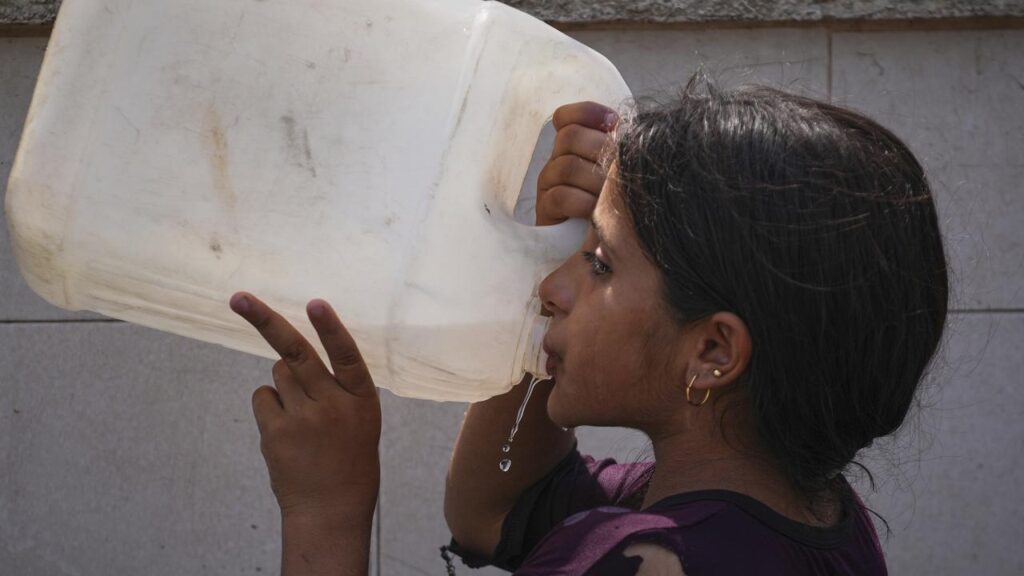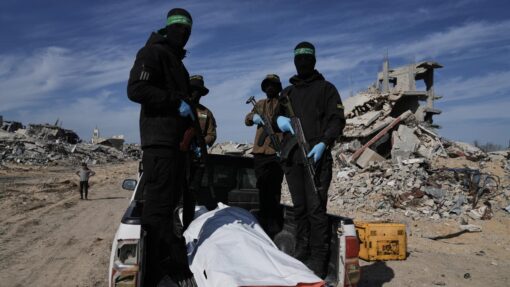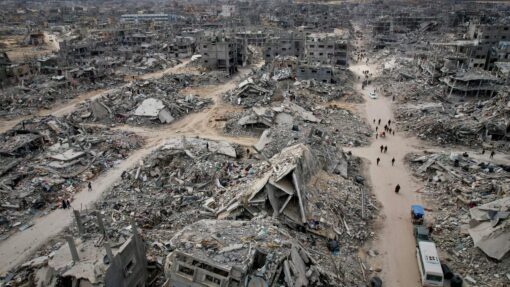Families in Gaza drink water that makes them sick
|

After waking early to stand in line for an hour under the August heat, Rana Odeh returns to her tent with her jug of murky water.
She wipes the sweat from her brow and strategises how much to portion out to her two small children.
From its colour alone, she knows full well it’s likely contaminated.
Thirst supersedes the fear of illness.
She fills small bottles for her son and daughter and pours a sip into a teacup for herself.
What’s left she adds to a jerrycan for later.
“We are forced to give it to our children because we have no alternative,” said Odeh, who was driven from her home in Khan Younis.
“It causes diseases for us and our children.”

Such scenes have become the grim routine in Muwasi, a sprawling displacement camp in central Gaza where hundreds of thousands endure scorching summer heat.
Sweat-soaked and dust-covered, parents and children chase down water trucks that come every two or three days, filling bottles, canisters and buckets and then hauling them home, sometimes on donkey-drawn carts.
Each drop is rationed for drinking, cooking, cleaning or washing.
Some reuse what they can and save a couple of cloudy inches in their jerrycans for whatever tomorrow brings — or doesn’t.
When water fails to arrive, Odeh said, she and her son fill bottles from the sea.

Over the 22 months since Israel launched its offensive, Gaza’s water access has been progressively strained.
Limits on fuel imports and electricity have hampered the operation of desalination plants, while infrastructure bottlenecks and pipeline damage choked delivery to a dribble.
Gaza’s aquifers became polluted by sewage and the wreckage of bombed buildings.
Wells are mostly inaccessible or destroyed, aid groups and the local utility say.
UNRWA — the UN agency for Palestinian refugees — said Thursday that its health centres now see an average of 10,300 patients a week with infectious diseases, mostly diarrhoea from contaminated water.
Thirst is only growing as a heat wave bears down, with humidity and temperatures in Gaza soaring on Friday to 35 degrees.
Mahmoud al-Dibs, a father displaced from Gaza City to Muwasi, dumped water over his head from a flimsy plastic bag — one of the vessels used to carry water in the camps.
“Outside the tents it is hot and inside the tents, it is hot, so we are forced to drink this water wherever we go,” he said.
The few people still possessing rooftop tanks can’t muster enough water to clean them, so what flows from their taps is yellow and unsafe, said Bushra Khalidi, an official with Oxfam, an aid group working in Gaza.
Before the war, the coastal enclave’s more than two million residents got their water from a patchwork of sources.
Some was piped in by Mekorot, Israel’s national water utility.
Some came from desalination plants.
Some was pulled from high-saline wells, and some imported in bottles.
Every source has been jeopardised.
Palestinians are relying more heavily on groundwater, which today makes up more than half of Gaza’s supply.
The well water has historically been brackish, but still serviceable for cleaning, bathing, or farming, according to Palestinian water officials and aid groups.
Now people have to drink it.
The effects of drinking unclean water don’t always appear right away, said Mark Zeitoun, director general of the Geneva Water Hub, a policy institute.
“Untreated sewage mixes with drinking water, and you drink that or wash your food with it, then you’re drinking microbes and can get dysentery,” Zeitoun said.
“If you’re forced to drink salty, brackish water, it just does your kidneys in, and then you’re on dialysis for decades.”
In February, acute watery diarrhoea accounted for less than 20 per cent of reported illnesses in Gaza.
By July, it had surged to 44 per cent, raising the risk of severe dehydration, according to UNICEF, the UN children’s agency.
AP


